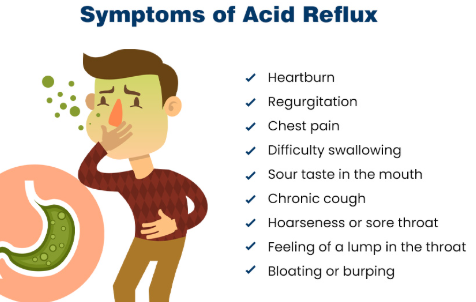Introduction
Fibromyalgia is a chronic condition characterized by widespread pain, fatigue, cognitive issues, and sleep disturbances. Despite its official recognition by organizations like the World Health Organization (WHO) and the American College of Rheumatology (ACR), patients with fibromyalgia continue to face skepticism, misdiagnosis, and inadequate care within healthcare systems.
Many healthcare professionals remain uncertain about fibromyalgia’s causes and treatment, leading to dismissive attitudes, delayed diagnoses, and poor patient outcomes. This article explores the attitudes toward fibromyalgia patients within healthcare systems, highlighting the challenges they face, the impact of medical bias, and the gradual shift toward better recognition and care.
The History of Medical Attitudes Toward Fibromyalgia
For centuries, fibromyalgia-like symptoms were dismissed as “hysteria,” “neurasthenia,” or “psychosomatic illness.”
- In the 19th century, chronic pain conditions were often attributed to emotional instability, particularly in women.
- The mid-20th century introduced the term fibrositis, incorrectly suggesting that inflammation caused the pain.
- In 1990, the American College of Rheumatology (ACR) established the first diagnostic criteria, but many doctors remained skeptical.
Despite increased medical awareness, bias and misunderstanding still persist within healthcare systems.
Why Some Healthcare Professionals Dismiss Fibromyalgia
Many doctors are hesitant to fully accept fibromyalgia as a legitimate condition due to:
- Lack of a definitive diagnostic test (like a blood test or MRI).
- Overlapping symptoms with other conditions, leading to misdiagnosis.
- Belief that fibromyalgia is a psychological rather than physical disorder.
- Frustration over limited treatment options, as many conventional painkillers are ineffective.
This skepticism can lead to patients feeling unheard, dismissed, or improperly treated.
The Impact of Fibromyalgia’s Unclear Pathophysiology
One of the biggest challenges in gaining full acceptance of fibromyalgia within healthcare systems is that its exact biological cause remains unknown.
- Studies show abnormal pain processing in the central nervous system.
- Some research points to neuroinflammation and immune system dysfunction.
- Others suggest genetic factors and environmental triggers.
Until a clear biological marker is identified, some doctors will continue to doubt fibromyalgia’s legitimacy.
The Role of Gender Bias in Fibromyalgia Care
Fibromyalgia disproportionately affects women, with an estimated 80–90% of patients being female.
- Historically, women’s pain has been dismissed more frequently than men’s.
- Many female fibromyalgia patients report being told their symptoms are “all in their head.”
- Research shows women wait longer for pain diagnoses compared to men.
Gender bias has contributed to the lack of urgency in fibromyalgia research and treatment development.
The Psychological vs. Physical Debate
Some doctors still view fibromyalgia as a psychological condition due to its overlap with anxiety and depression.
- While mental health plays a role in pain perception, research confirms that fibromyalgia is a neurological condition affecting the pain processing system.
- Functional MRI scans show that fibromyalgia patients experience amplified pain signals, even from mild stimuli.
Despite growing scientific evidence, some healthcare professionals continue to downplay fibromyalgia as a purely psychological disorder.
Challenges in Diagnosing Fibromyalgia Within Healthcare Systems
- Fibromyalgia symptoms mimic other conditions, making diagnosis difficult.
- Many healthcare systems lack specialists familiar with fibromyalgia.
- Patients often undergo years of testing and misdiagnosis before receiving a proper diagnosis.
This results in delayed treatment and worsening symptoms for patients.
How Insurance Policies Influence Fibromyalgia Treatment
- Many insurance companies do not cover fibromyalgia treatments, labeling them as “experimental.”
- Access to specialists and pain clinics is often limited, forcing patients to rely on primary care doctors who may not be well-trained in fibromyalgia management.
- Medications commonly prescribed for fibromyalgia, like Lyrica and Cymbalta, may not be covered by insurance unless other treatments fail first.
This financial burden forces many fibromyalgia patients to seek alternative treatments out-of-pocket.
Medical Gaslighting and the Emotional Toll on Patients
Many fibromyalgia patients report experiencing medical gaslighting, where their symptoms are dismissed, minimized, or misattributed to anxiety or depression.
- Some doctors refuse to diagnose fibromyalgia and instead suggest that patients are exaggerating their pain.
- This leads to feelings of isolation, hopelessness, and distrust in medical professionals.
- Studies show fibromyalgia patients experience higher rates of medical trauma and PTSD due to repeated dismissal of their pain.
How Patient Advocacy is Changing Healthcare Attitudes
Patient advocacy groups have played a major role in pushing for better fibromyalgia awareness and care.
- Organizations like the National Fibromyalgia Association (NFA) and Fibromyalgia Action UK have increased awareness and research funding.
- Social media communities have empowered patients to share their experiences and demand better treatment.
- Fibromyalgia is now included in many medical school curriculums, helping future doctors recognize and respect the condition.
Although challenges remain, advocacy efforts are shifting the healthcare system toward better recognition and support for fibromyalgia patients.
Conclusion
The attitudes toward fibromyalgia patients within healthcare systems have slowly improved, but skepticism, misdiagnosis, and medical bias still persist. Many healthcare professionals lack the training or willingness to properly diagnose and treat fibromyalgia, leading to delayed care and emotional distress for patients.
However, with ongoing research, advocacy, and education, the medical community is gradually acknowledging fibromyalgia as a legitimate and complex condition, paving the way for better diagnosis, treatment, and patient care in the future.

Click Here to Visit the Store and find Much More….
For More Information Related to Fibromyalgia Visit below sites:
References:
Fibromyalgia Contact Us Directly
Click here to Contact us Directly on Inbox
Official Fibromyalgia Blogs
Click here to Get the latest Chronic illness Updates
Fibromyalgia Stores




